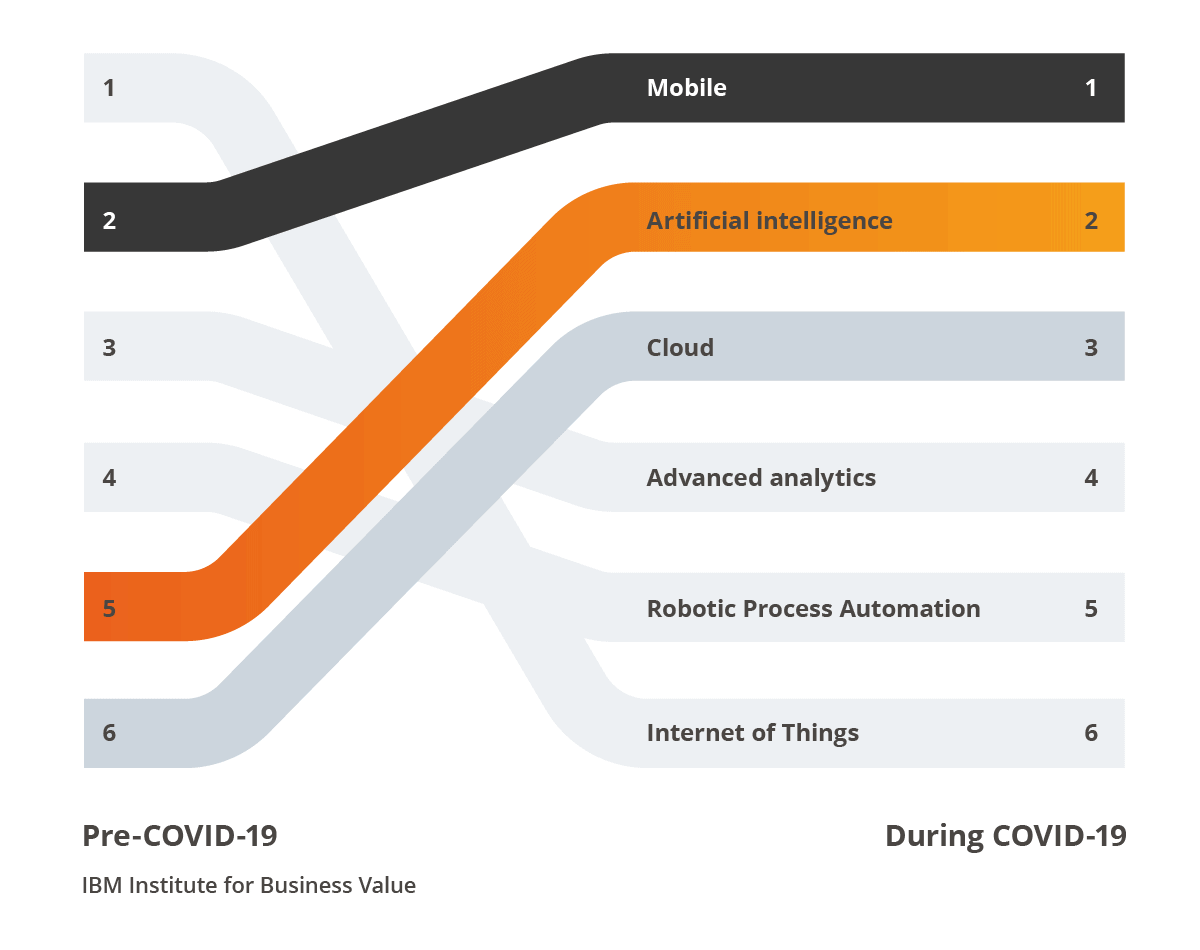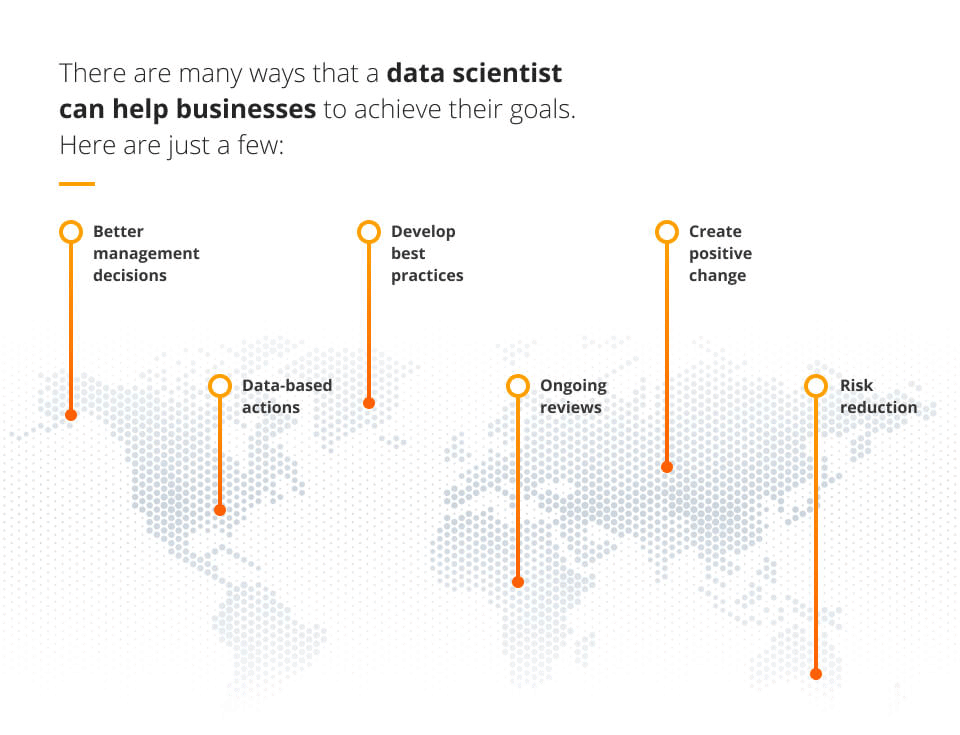
Effective IT business strategy: key components and benefits
Currently, no one needs to be persuaded that the integration of business with IT achievements is necessary and may yield great results both in regard to the adaptation of advanced cloud services in the infrastructure of large companies, and in regard to the local automation of even the most basic tasks in smaller companies.
Why do companies need an IT strategy?
However, for decades, such adaptation in many organisations was performed relatively intuitively or was based on accepting dedicated offers, which are not always best tailored to a given company’s requirements, available on the market.
Therefore, people began to realise the necessity of introducing comprehensive documentation that would enable conscious and planned use of the technology solutions by companies.
The plan, encompassing the use of these achievements in a way that would benefit the profile and development direction of a particular organisation to the best of possibility, is called IT strategy.
What is IT strategy (Information Technology strategy)?
As previously mentioned, IT strategy is a document an organisation develops to determine the optimal profile of IT resource allocation. Therefore, it is a plan, the initial point of which should be the definition of the current status, particularly in terms of already used resources.
An overview of the entire organisation with all its business units is required, and for that, in most cases, the direct involvement of the entire executive level is necessary.
That is why specialised teams are commissioned for the task that will work under the CIO’s watchful eye. Cooperation with the representatives of higher management levels is, in all agreements, considered by experts to be the necessary condition for developing an effective IT strategy.
Are you wondering how you can accelerate your business growth? Take a look at:
10 benefits of a digital acceleration strategy for your business
3 strategies focused on creating value for the client [Future Processing example]
The complete guide to developing an effective R&D strategy for enterprises
What benefits can you expect from a well-designed IT business strategy?
Having a solid IT strategy is highly beneficial for any business. Here’s a quick rundown of why it’s important:
It ensures that your technology investments are aligned with your business objectives so that they drive the desired outcomes, such as increased sales, higher customer satisfaction, and improved team productivity.
Having a robust IT strategy is crucial for staying ahead of competitors. It highlights the latest tech trends and demonstrates how they can give your business a competitive advantage.
It also ramps up customer experience. You can make your customers’ interactions smoother and build client loyalty (or reduce customer churn rate) by picking the right technology, CRM systems or apps.
In terms of efficiency, it’s a game changer. Automating tasks and making business processes more streamlined means more gets done with less effort and fewer mistakes.
It also means your IT team isn’t just putting out fires. They get to plan ahead, focusing on long-term wins and strategic planning.
Finally, it’s all about teamwork. A solid IT strategic plan means better communication between your IT department and other business units, leading to smarter decisions concerning overall business strategy.

Having a well-planned organisation’s business strategy is not just a technical matter but a fundamental aspect of business success and digital transformation strategy.
When to craft your IT Strategy?
It would be advisable to demonstrate the requirement with an example. The reason for such a situation is, e.g. finance control – in most cases, the strategy will positively influence the organisation’s condition. Not by blind buyouts of an increasing amount of Amazon and Microsoft portfolios, but by such optimisation of the current IT infrastructure, so that it would generate the least cost.
If you are thinking about optimising costs in your company, check also:
No doubt that the temptation to use the latest, most advanced services, which are widely talked about at developer conferences and in corridors of industry conferences, is enormous, but their capabilities usually outgrow the actual needs of an organisation.
Therefore, the strategy should not assume the use of the most appealing IT tools but tools that, cost and functionality-wise, will realise particular tasks. As an element of a well-developed IT strategy, the selections should be determined by needs and goals rather than a fondness for technological novelties or temporary trends.

How often should you revise your IT business strategy?
To ensure your overall business strategy is in line with organizational objectives and market conditions, it is imperative to conduct regular reviews. Their frequency will depend on factors such as industry trends, company size, and the nature of the strategic plan.
Quarterly Review: Perfect for industries that move quickly, this method mixes long-term goals with more immediate 90-day objectives, keeping everything in sync with what’s happening now in the market.
Annual Review: Great for up-and-coming companies, this once-a-year deep dive looks at your comprehensive plan or strategy objectives against the backdrop of market trends (what customers want, industry best practices, and legal stuff you need to keep an eye on).
Trigger Situations: When things change in the market, you’ve got something new to offer, hit an important milestone, or are on the lookout for investors, it’s time to tweak your strategy to stay on top.
Continuous Process: Your planning shouldn’t just stop; it’s an ongoing thing. As your business grows and the market shifts, your strategy should be right there, evolving with it.
How to prepare an IT strategy and business objectives?
Information Technology strategy should arise from the analysis of the current situation, but it is a plan that is to lead an organisation towards a particular goal in an organised, systemic way. Therefore, it cannot focus solely on constatations and the optimisation of IT infrastructure expenditures but also support realising ambitions. It is worth mentioning that with Business Intelligence approach you can turn data into valuable insights.
However, the IT strategy should assume a secondary position or even a support one. The use of IT resources is not a goal of its own but a method of maximising efficiency in achieving business goals, e.g. assuming a particular position in a given portion of the market, income increase, etc.
As a result, the effective IT strategy should remain in strict synergy with the organisation’s general business strategy. The CIO and the team managed should primarily analyse the company’s goals, identify its used resources, and develop such a model of action so that IT would serve the realisation of these goals without overburdening other resources.
As demonstrated, there is no way to achieve such a profound analysis of the status and the goals and to bend accessible IT resources to these needs without the involvement of the organisation’s management.
However, that is not the end – after developing a sketch of the strategy resulting from the company’s general business goals, they must be further consulted with middle-level management.
This way, we may confront both views, allowing us to evade a situation that often happens where, in confrontation with the practice of implementation, the strategy or policy developed at high organisational levels turns out to be impractical or unintuitive.
A good practice is to repeat the consultation of the validity of the elements included in the IT strategy on different levels of the organisation as long as a consensus is developed.
Business processes and risk management strategies
One should not forget that the strategy of optimal implementation of technological achievements for realising an organisation’s ambitions is a document with strictly defined, practical application.
Therefore, it must focus on goals and useful resources, not wishful thinking. As a result, the strategic planning should also include key elements as the identification of strengths, but also weaknesses and flaws of existing solutions.
Gathering end-user’s feedback on software, hardware, and IT services that are already provided proves useful for this purpose. Risk analysis and effective risk management are no less important elements of a properly developed IT strategy. The document should include not only the outline of estimated risk (e.g. the possibility of an unexpected increase of the lease of a particular cloud provider) but also methods to minimise it.
As was presented, IT strategy development is a multi-phase process, and the broader the range of operations of the company is covered by the document, the better it will translate to the possibility of implementing it in practice and, eventually, to its efficiency. One cannot forget that IT solutions are present in most organisations at every or almost every level of organisation.
As a result, working on a strategic objectives should be a joint effort and – realising the business goals of the whole – respond to the needs of everyone. We have yet one important issue to address – the basis of an efficient realisation of an IT strategy is a solid IT operations department.
In case of any shortcomings – staff, competency, or operational – in this department, one cannot assume that even the greatest strategy, best tailored to an organisation’s needs, profile and goals, will yield measurable results.
How to scale your IT strategy as your business grows?
As your business expands, it is critical to scale your IT strategy accordingly. Start by ensuring that your IT infrastructure is adaptable to the increased demand and new technological advancements. Invest in scalable solutions like cloud computing and modular software architectures. Cybersecurity and data management become more intricate with growth, so prioritise these areas.
Moreover, don’t forget to regularly review and update your IT strategy to align with your changing business priorities and needs.
Additionally, consider partnering with experts like Future Processing, who can provide tailored IT solutions and guidance in elevating your IT strategy to match your expanding business needs.



